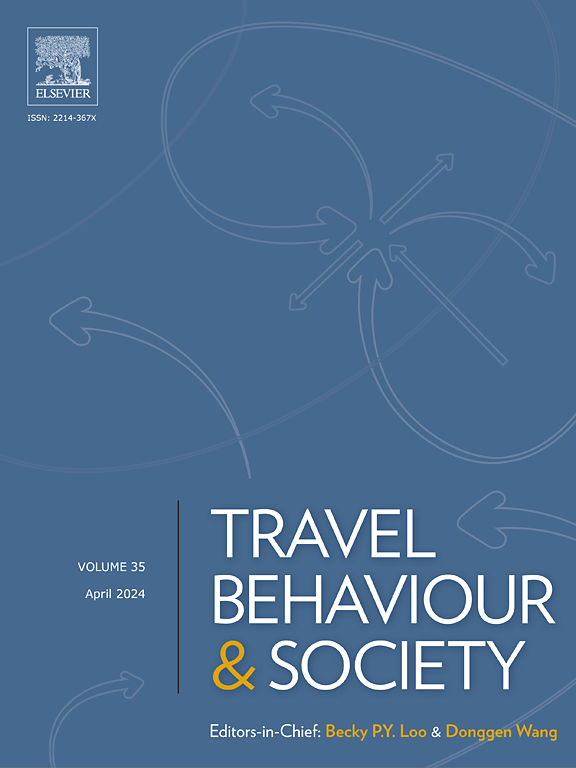Understanding urban spatial structure through the lens of multiple modal accessibility
IF 5.7
2区 工程技术
Q1 TRANSPORTATION
引用次数: 0
Abstract
In contrast to most previous studies that investigated urban spatial structures via the accessibility pattern by a single transport mode, this study proposes a research framework based on the concept of modal accessibility gap (MAG). This framework uses cumulative accessibility measurements, spatial clustering methods with spatial constraints, and online map tools. These methods were employed in the urban spatial structure identification of Kunming, a major city in Southwest China. Findings can be summarized as follows: First, there are obvious spatial disparities in accessibility between motorized and non-motorized transport modes, which emphasizes the necessity of understanding urban structures with multiple modal accessibility. Second, combining the accessibility of the four common modes (driving, public transport, walking, and cycling) with spatial constraints is beneficial for maintaining spatial continuity. In addition, some substructures can be better depicted compared to urban structures detected by a single transport mode. Thus, introducing non-motorized transport modes into the MAG analysis is helpful for the urban planning aimed at green mobility, healthy lifestyles, and human well-being.
多模式可达性视角下的城市空间结构研究
与以往大多数研究通过单一交通方式的可达性格局来研究城市空间结构不同,本研究提出了基于模式可达性差距(MAG)概念的研究框架。该框架使用累积可达性测量、空间约束的空间聚类方法和在线地图工具。将这些方法应用于西南主要城市昆明市的城市空间结构识别。研究结果表明:①机动车与非机动车交通方式的可达性存在明显的空间差异,强调了对具有多种交通方式可达性的城市结构进行认识的必要性;其次,将四种常见交通方式(驾车、公共交通、步行和骑自行车)的可达性与空间约束相结合,有利于保持空间连续性。此外,与单一运输模式检测到的城市结构相比,一些子结构可以更好地描述。因此,在MAG分析中引入非机动交通方式有助于以绿色交通、健康生活方式和人类福祉为目标的城市规划。
本文章由计算机程序翻译,如有差异,请以英文原文为准。
求助全文
约1分钟内获得全文
求助全文
来源期刊

Travel Behaviour and Society
TRANSPORTATION-
CiteScore
9.80
自引率
7.70%
发文量
109
期刊介绍:
Travel Behaviour and Society is an interdisciplinary journal publishing high-quality original papers which report leading edge research in theories, methodologies and applications concerning transportation issues and challenges which involve the social and spatial dimensions. In particular, it provides a discussion forum for major research in travel behaviour, transportation infrastructure, transportation and environmental issues, mobility and social sustainability, transportation geographic information systems (TGIS), transportation and quality of life, transportation data collection and analysis, etc.
 求助内容:
求助内容: 应助结果提醒方式:
应助结果提醒方式:


